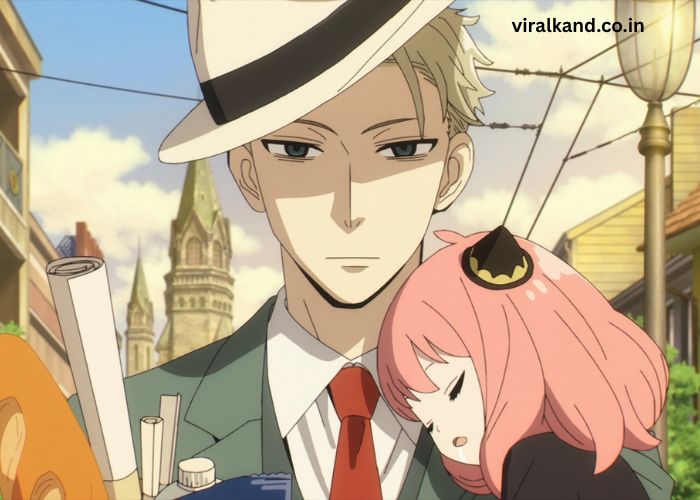The Second East-West War is a pivotal event in the story of many characters in the narrative, and Loid stands out as one of its most significant victims. The war, marked by intense battles and complex geopolitical struggles, had a profound effect on countless lives. Loid’s journey through this harrowing period gives insight into the broader consequences of war, not only on a societal scale but also on individual lives. As a victim of this conflict, Loid’s experiences underscore themes of survival, trauma, and resilience.
In this blog post, we will explore Loid’s role as a victim in the Second East-West War, shedding light on his personal struggles, the challenges he faced during the war, and how these experiences shaped his character. Through examining his backstory, motivations, and personal evolution, we gain a deeper understanding of the profound impact of war on individuals, particularly those who find themselves caught in its aftermath.
Key Points:
- Loid’s journey is shaped by the devastating effects of the Second East-West War.
- As a victim, he endures emotional and physical challenges.
- Loid’s experiences during the war influence his decisions and his future actions.
How Did Loid Become a Victim of the Second East-West War?
Loid’s involvement in the Second East-West War is marked by his unexpected rise to prominence as a victim of the conflict. The war, which had begun with escalating tensions between two powerful nations, engulfed many innocent lives, and Loid’s is one such story of survival. Initially, he had no direct role in the conflict, but as the war spread across borders and devastated nations, Loid was pulled into the chaos.
His transformation from a bystander to a victim reflects the broader theme of the war’s indiscriminate nature. Many individuals like Loid found themselves caught in the crossfire, their lives altered forever by forces beyond their control. Loid’s role as a victim highlights the tragic reality of war—how it destroys lives and shatters the futures of countless individuals, regardless of their involvement or innocence.
One example of Loid’s transformation is his loss of family members during the war. This loss not only triggered his participation but also marked the beginning of his journey through personal loss and recovery. The emotional toll of witnessing the destruction around him pushed Loid to seek a path that could ultimately lead to healing and justice.
What Impact Did the War Have on Loid’s Character?
The impact of the Second East-West War on Loid’s character cannot be overstated. War often brings out both the best and worst in people, and Loid was no exception. His experiences during the conflict molded him into a survivor, but also left scars that would shape his behavior for years to come. Before the war, Loid was an individual with little to no experience with violence or loss, but the brutality of the war transformed him into a hardened individual, capable of making difficult choices.
One of the key character traits that developed in Loid during the war is his resilience. Despite the horrors he witnessed, he managed to retain a sense of purpose, channeling his pain and anger into something constructive. His determination to survive, to fight back against the forces that sought to destroy him, became central to his character.
However, the war also brought out darker aspects of Loid’s character. The trauma he endured caused him to question his beliefs and values, leading him to make morally ambiguous decisions. As the war progressed, Loid’s internal struggle intensified, as he wrestled with the guilt of his actions and the consequences of his survival.
| Aspect of Character | Before the War | After the War |
| Resilience | Mild | Strong and Unyielding |
| Moral Compass | Clear and Steady | Questionable at Times |
| Emotional Stability | Balanced | Traumatized and Scarred |
| Social Interactions | Friendly and Open | Withdrawn and Guarded |
How Did Loid’s Actions During the War Shape His Future?
Loid’s actions during the Second East-West War were instrumental in shaping not only his future but also the trajectory of many others. His personal sacrifices and choices influenced the outcome of the war in ways he didn’t foresee. As a soldier caught in the heart of the conflict, Loid became a symbol of the cost of war—not just in terms of lives lost but also in the moral compromises people are forced to make.
For instance, Loid was involved in critical operations that helped bring about an end to the war, but at a high personal cost. His role in these operations wasn’t without controversy, as many questioned whether the actions he took were morally justifiable. However, his success in executing these missions helped secure his future as a leader, even if it meant grappling with the weight of his decisions for the rest of his life.
After the war, Loid’s reputation as a strategic and capable leader allowed him to assume leadership positions in the post-war rebuilding process. However, this success came at a steep price—his emotional and psychological well-being was severely impacted. The toll of his wartime decisions left him with a deep sense of guilt that he would carry for years.
What Does Loid’s Story Teach Us About the Consequences of War?
Loid’s story offers a poignant lesson about the consequences of war, both for individuals and society as a whole. His experiences highlight the psychological toll that war takes on those who survive it. The emotional scars left by witnessing violence, losing loved ones, and making difficult decisions during wartime often linger long after the fighting ends.
In Loid’s case, the war forced him to confront his own humanity and navigate the aftermath of trauma. His internal conflict between his role as a survivor and his sense of guilt is something many war victims face. These emotional scars are not easily healed, and Loid’s story serves as a reminder of the importance of addressing mental health and offering support to those who have experienced the horrors of war.
Furthermore, Loid’s journey underscores the resilience of the human spirit. Despite the overwhelming odds and the deep emotional pain, Loid continues to move forward, rebuilding his life and seeking justice for those who were lost during the conflict. His story is one of hope, reminding us that even in the face of unimaginable adversity, survival and recovery are possible.
Conclusion
Loid’s legacy as a victim of the Second East-West War serves as both a cautionary tale and an inspirational story of survival. The war, with all its horrors and atrocities, marked Loid’s life in profound ways, shaping his character, actions, and beliefs for years to come. His role in the conflict highlights the universal truth that war affects everyone, not just the soldiers on the front lines but also the innocent civilians caught in the crossfire.
Loid’s journey is a testament to the resilience of the human spirit, demonstrating that even in the darkest times, individuals can find strength and purpose. While the scars of war may never fully fade, Loid’s story proves that it is possible to emerge from tragedy and make a meaningful impact on the world.
FAQ’s
- What was Loid’s role in the Second East-West War?
Loid was a victim who got caught up in the war’s destructive path. He participated in crucial operations that influenced the war’s outcome. - How did the war impact Loid’s character?
The war transformed Loid, making him resilient yet emotionally scarred. His moral compass became questioned, and his decisions grew more complex. - What personal sacrifices did Loid make during the war?
Loid made significant sacrifices, including losing loved ones and making morally ambiguous decisions, all of which left him with lasting guilt. - How did Loid’s actions shape his future?
Loid’s leadership during and after the war helped bring peace, but his emotional scars and guilt shaped his personal and professional life. - What lesson does Loid’s story teach about war?
Loid’s story teaches that war leaves lasting emotional scars on its victims and highlights the importance of resilience and healing after trauma.





